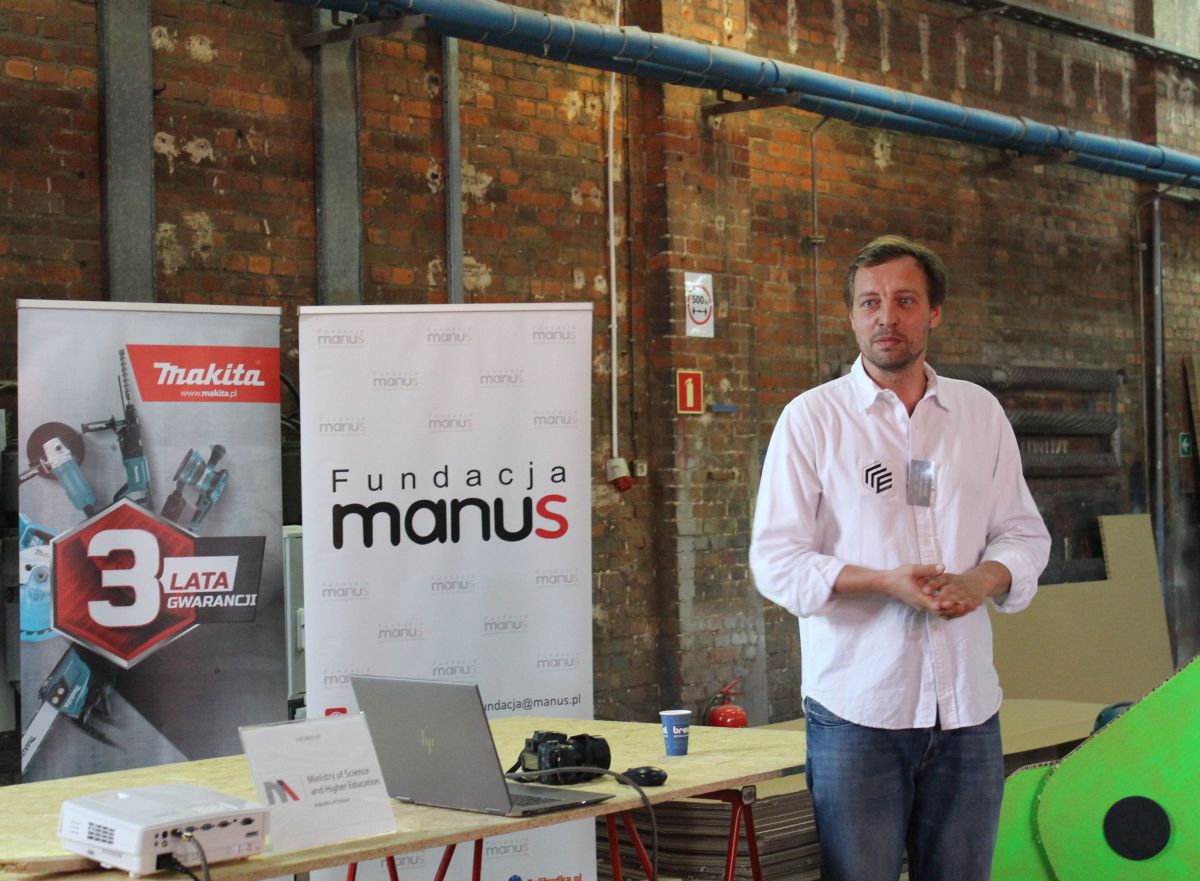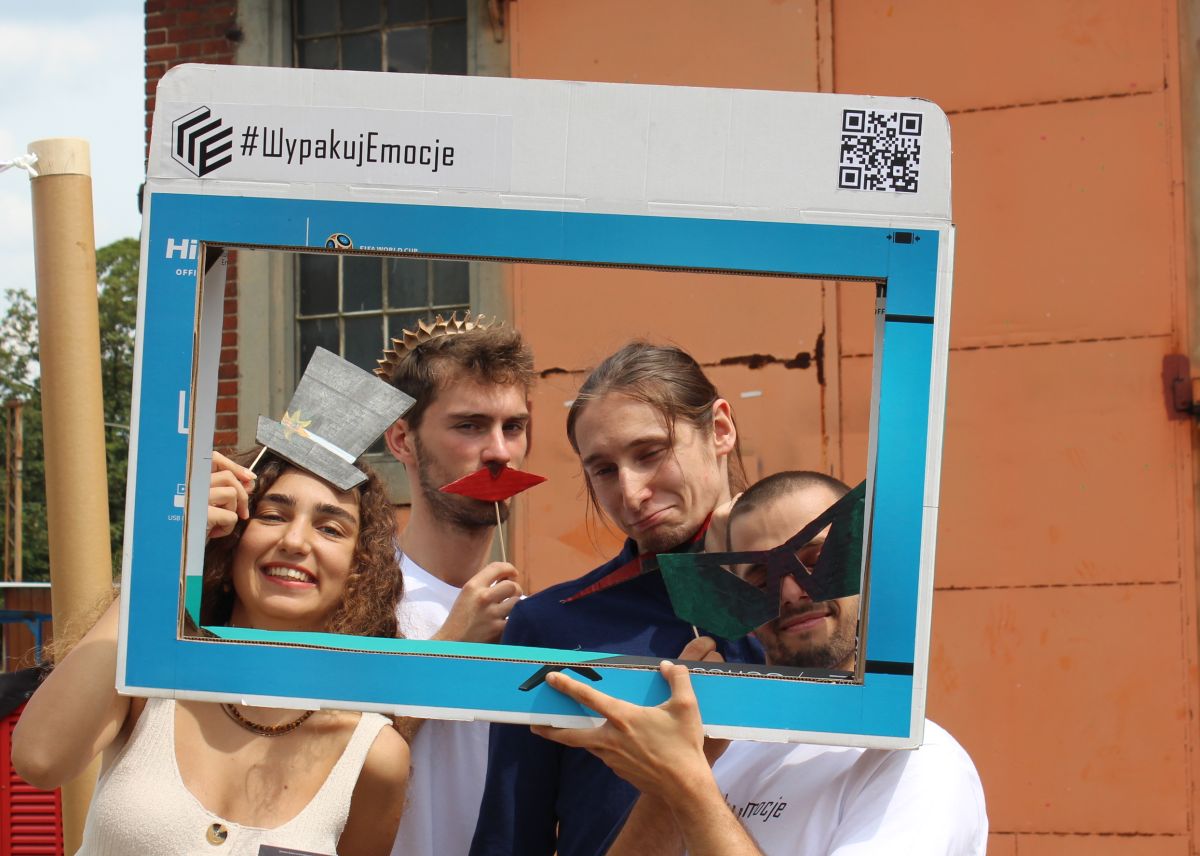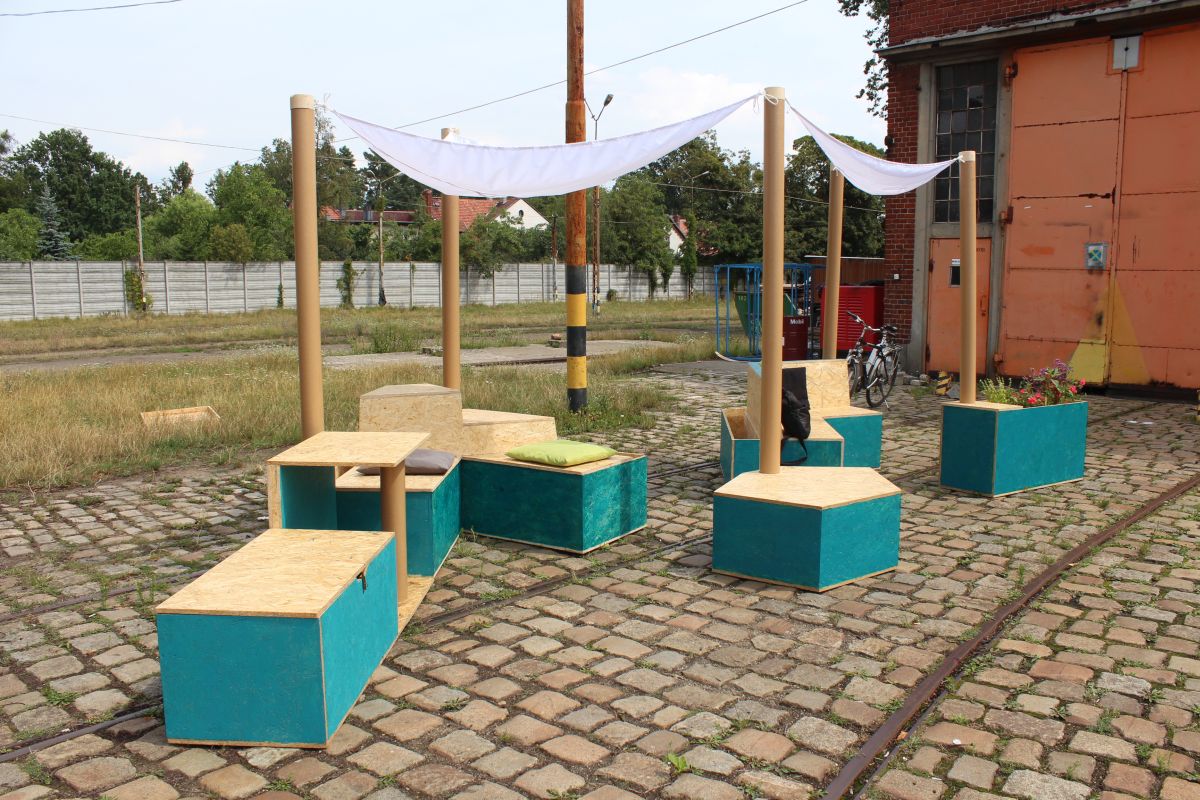YOUR BROWSER IS OUT-OF-DATE.
We have detected that you are using an outdated browser. Our service may not work properly for you. We recommend upgrading or switching to another browser.
Date: 29.07.2019 Category: general news, student activity
Six unusual designs using cardboard and wood are the result of this year's Summer School of Architecture at WUST. Its participants built various structures including a space with seats for seniors, an exhibition stand encouraging the visitor to play, and experimental constructions designed to survive a fire, flooding, and being crushed by a log.
 It was the fourth edition of the Summer School of Architecture at our university. As in previous years, students - also from foreign academic centres - worked in groups on several ambitious tasks involving the use of cellulose-based components. The main theme of the workshop was the pop-up concept.
It was the fourth edition of the Summer School of Architecture at our university. As in previous years, students - also from foreign academic centres - worked in groups on several ambitious tasks involving the use of cellulose-based components. The main theme of the workshop was the pop-up concept.
This year, almost 50 people came to Wrocław. The workshop was organised jointly by Marcel Bilow PhD, Eng, Arch from the Technical University of Delft and Jerzy Łątka, PhD, Eng, Arch from WUST’s Faculty of Architecture.
- In a dozen or so days, the participants of the summer school did what the students at our university deal with for six months as part of the Bucky Lab course - said doctor Bilow during the presentation of the workshop results. - These constructions and the commitment of their creators are all the more so impressive - he emphasised.
Meanwhile, doctor Łątka explained how to understand pop-up architecture:- These are temporary installations. They are easy and quick to build, responding to the needs of a specific place, filling a gap. They should be made of materials that are as harmless to the environment as possible, and preferably those that can be reused or recycled.
 During the workshop, the students were given specific tasks and guidelines to follow, but the result of their work depended solely on their creativity, sense of aesthetics, and the ability to use tools. The subjects of the projects were related to the needs of the sponsors and partners of the Summer School of Architecture. For example, Schumacher, a manufacturer of packaging for products including household appliances, suggested to the students that they should think about what use to make of boxes for TV sets, which end up in garbage containers immediately after the contents are unboxed. A three-strong team of workshop participants had to create a solution that would give a second life to cardboard packaging, and do it in a way that was simple enough for everyone to repeat it at home.
During the workshop, the students were given specific tasks and guidelines to follow, but the result of their work depended solely on their creativity, sense of aesthetics, and the ability to use tools. The subjects of the projects were related to the needs of the sponsors and partners of the Summer School of Architecture. For example, Schumacher, a manufacturer of packaging for products including household appliances, suggested to the students that they should think about what use to make of boxes for TV sets, which end up in garbage containers immediately after the contents are unboxed. A three-strong team of workshop participants had to create a solution that would give a second life to cardboard packaging, and do it in a way that was simple enough for everyone to repeat it at home.
The students came up with a social campaign they named #WypakujEmocje ("#UnboxEmotions"), which would involve manufacturers of various appliances and packaging. According to its premise, cardboard boxes would contain information on how to reuse them. There would be also an easy to see QR code, which, when scanned, would refer the product user to instructional videos such as the one made by the school's participants.
Apart from the photo booth, the students also designed cardboard furniture and a picnic set with a bag for drinks, as well as a large blanket and a game with big cardboard gloves to catch a cardboard ball.
Another group’s task was to build an exhibition stand for the tool manufacturer Makita. It had to be modular and light, and therefore easy to transport and unfold.
 The shape of the stand resembles a saw disc. It consists of a mobile wall with shelves on which Makita tools are placed and a table which can be set up to form different configurations. However, it is not just a piece of furniture - it contains various drawers and elements encouraging the user to try the company's products such as drills and jigsaws.
The shape of the stand resembles a saw disc. It consists of a mobile wall with shelves on which Makita tools are placed and a table which can be set up to form different configurations. However, it is not just a piece of furniture - it contains various drawers and elements encouraging the user to try the company's products such as drills and jigsaws.
Three other teams worked on experimental constructions, which, although made of paper, should be as resistant to fire, water, and crushing with a heavy element as it is only possible. - It's about simulating the situation of a natural disaster - explained the students - i.e. a fire, flood, or wind storm with trees breaking and falling.
These structures are to be tested in autumn at the Technical University of Darmstadt, which was a partner to the Summer School of Architecture. The fire test will be applied to a house built of ten layers of various types of cardboard. Its outer part was covered by the students in such a way as to round off all the edges. They discovered that if the fire does not come into contact with them, the material is less susceptible to fire.
The waterproof house consists of 12 modules. Its designers used corrugated and honeycomb cardboard for side walls. The gable walls, on the other hand, were made of tubes. The bottom of the structure features a gutter to prevent water from entering the interior.
Cardboard tubes were also used by the students building a small house supposed to withstand being crushed by a 250 kg log.
Their structure features a skeleton design with portable frames. The students designed and built it using a piece of software for static strength testing.
The last construction was made for the Active Senior Foundation (co-financed by Vantage Development). The organisation asked for a place to encourage elderly people to leave home and socialise with other people. The participants of the Summer School of Architecture designed a system of urban furniture - benches and a table where you can sit down to relax, talk to your neighbours, or read a book. The construction also features flower pots, a chest in which to store various things, and a bookshelf for neighbourhood book-crossing. Soon, it will be installed in Popowice, where it will serve the residents for some time.
The partners to the Summer School of Architecture were the Technical Universities of Delft and Darmstadt and the Turkish University of Yaşar.
More photos from the workshop can be viewed on the Bucky Lab blog.
Our site uses cookies. By continuing to browse the site you agree to our use of cookies in accordance with current browser settings. You can change at any time.